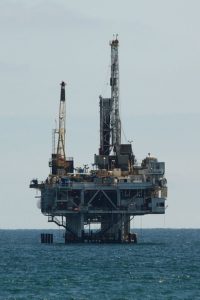|
On January 6, 2025, with 2 weeks left in his Presidency, Joe Biden used his power under the Outer Continental Shelf Lands Act (OCSLA) — not an Executive Order — to ban offshore oil and gas drilling in over 625 million acres of offshore U.S. coastal waters, including the entire Pacific Coast from the Canadian to the Mexican Border, the entire Atlantic Ocean Coast, much of the Alaskan Coast, and the Eastern Gulf of Mexico along the Florida Coast. Ironically, during his first term, Trump himself imposed a moratorium through 2032 on oil exploration along the Atlantic Coast from Florida to North Carolina as well as the Eastern Gulf of Mexico along Florida. And Trump’s expressed desire to reverse Biden’s January 6, 2025 action under OCSLA is likely to fail because the OCSLA is a federal law passed by Congress and implemented by the Department of the Interior (through its Bureau of Ocean Energy Management) and, therefore, legally stronger than an Executive Order. Even more important is the fact that while the OCSLA gives presidents the authority to remove offshore acreage from exposure to oil and gas exploration, it contains no language giving presidents the authority to reverse a previous removal and reinstate authorization to drill in such areas. Trump tried to reverse similar actions by President Obama during Trump’s first term in 2017, but was prevented from doing so by a federal district court judge who ruled that the OCSLA did not give him that authority. By the time that decision could have been appealed, Trump had been replaced in office by Biden. Biden’s January 6, 2025 offshore oil and gas exploration ban under the OCSLA did not, however, remove from such exploration any of the Outer Continental Shelf in BOEM’s Central Planning Area off of the coasts of Louisiana, Mississippi, and Alabama, where the overwhelming majority of Gulf of Mexico oil and gas leases are located (1,763 out of a total of 2,200 leases covering 9,574,815 out of a total of 11,953,440 acres leased). In the meantime, there is really no market for additional offshore oil exploration in U.S. waters: the Biden administration presided over not only the greatest period of oil production in U.S. history during its 4 years in office, but the largest volume of oil production in world history for any such period of time. (See U.S. Energy Information Agency data) Recent data collated by BOEM shows that only about one-fifth of all leased areas in the Gulf of Mexico are actually in production (448 out of 2,206 total active leases). Since the market is literally saturated with oil, there is no incentive for producers to spend more money exploring additional offshore sources when onshore sources such as western Texas and eastern New Mexico’s Permian Basin are less expensive and easier to exploit than Gulf of Mexico sources (which have become more expensive to explore and longer to reach production than onshore sources because of the substantially greater regulatory burdens on Gulf of Mexico drilling and production since the catastrophic Deepwater Horizon blowout in 2010). US EIA’s January 14, 2025 Short-Term Energy Outlook forecasts global oil production growing faster than demand for at least the next 2 years, with the price of crude forecast to drop 8% in 2025 and 11% in 2026 as a result. Under these circumstances, it is hard to imagine that the oil and gas industry will be interested in starting new production from their existing leaseholds, let alone exploiting any opportunities to bid on new leases that the new Trump administration might offer. – Jonathan Leo
|
A Message from Our Very Own, Jonathan Leo on the Status of Biden’s January 6, 202, Reban on Offshore Oil & Gas Leasing

